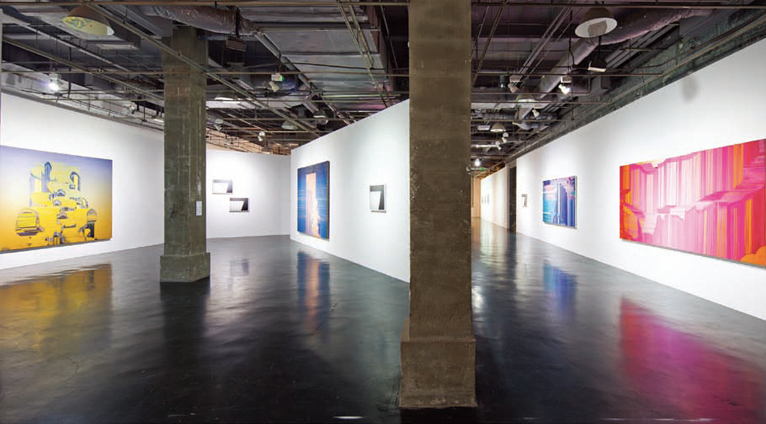JIANG ZHI: A THOUGHT ARISES
| April 4, 2012 | Post In LEAP 13

For those who have been paying attention to or are simply familiar with Jiang Zhi’s artistic practice this past decade, signs and echoes of Jiang’s previous works abound in the exhibition “A Thought Arises,” whether in the exquisite depth of the video installation The Light of Transience or the poetic wisdom expressed in the needles of the six photographs of Everything Is Perfect. But when viewers find themselves surrounded by a series of seven huge oil paintings, they will likely be perplexed: In this exhibition, despite the presence of the video installation and the six photographs, this group of oil paintings reinforces one’s sense that previously known definitions of “Jiang Zhi” or “the Jiang Zhi style” are dissolving. In other words, the artist seems intent on disappointing our expectations. Impolitely, perhaps, Jiang has jettisoned our accustomed discourse and opinions about his artistic practice and its meaning.
Yet possibly there is a deeper meaning: the true function of art may be to frustrate expectations, not to satisfy everyone’s illusory imaginings. This is precisely how this group of seven canvases, titled “Faulty Display,” displaces our commonly held knowledge about the artist Jiang Zhi. The answers they reveal are to questions that we have not asked. Refusing passage to the viewer’s imagination, these paintings place the self in an awkward, weakened position. When a few select canvases from this series were displayed in previous group exhibitions, they were classified and shown as abstract art. But that categorization was obviously for the sake of convenience; as we learn here, these paintings were initially realistic depictions of malfunctioning computer displays, not abstract lines of color. Inevitably, then, we must raise doubts concerning the concept of necessity.
However, just as a legal case cannot be decided using a binary value system— yes vs. no, existence vs. nonexistence— any discussion of the concept of necessity can only result in reducing to mere imagination the hard-gained opportunity for existence rescued from the realm of reality. Clearly, Jiang Zhi has proficient mastery of this quandary, and he manages to remain vigilant in his artistic practice. On one hand, he refuses abstract readings of these images that originated in reality; on the other hand, he uses colors beyond those displayed on the computer screens, in order to enrich their composition. Still yet, he gives his artworks almost overly poetic titles— Content Control–Sorrow, Try Now Void, Add cc– Ecstasy, and so on— in order to realign the place of these physical phenomena in the chain of significance. He strives to imbed these images in our corporeal reactions to the emotions of anger, hate, love, and sorrow of parting.
What Jiang Zhi attempts here is not, and perhaps never was, to create the sort of visual images that find meaning in painting per se. Neither does he merely seek to establish some kind of iconographic explanation for the plight of the human mind. He is certainly not after the abstraction of form. Instead, Jiang’s is a pursuit of the high level of abstraction inherent in the artistic act.
At the instant when the material world falls apart, when unsatisfied desires manifest as symbolic possibilities, point, line, plane, and shape each assumes its most alluring posture, surging toward us. Yet in Jiang Zhi’s canvases, these originally machine-generated images also lack all background, without front or back. There is no natural lighting, no inner light or even perspective. These paintings do not enchant, nor do they repulse. They remain indifferent, merciless, yet gorgeous: A rainbow that has been chewed up and spit out by the ideological meat grinder, hanging just above the horizon. And so, has Jiang actually painted anything? What expectations have been disappointed? A thought arises in ignorance. A world begins in this ignorance. Wu Zhongsheng (Translated by JiaJing Liu)

